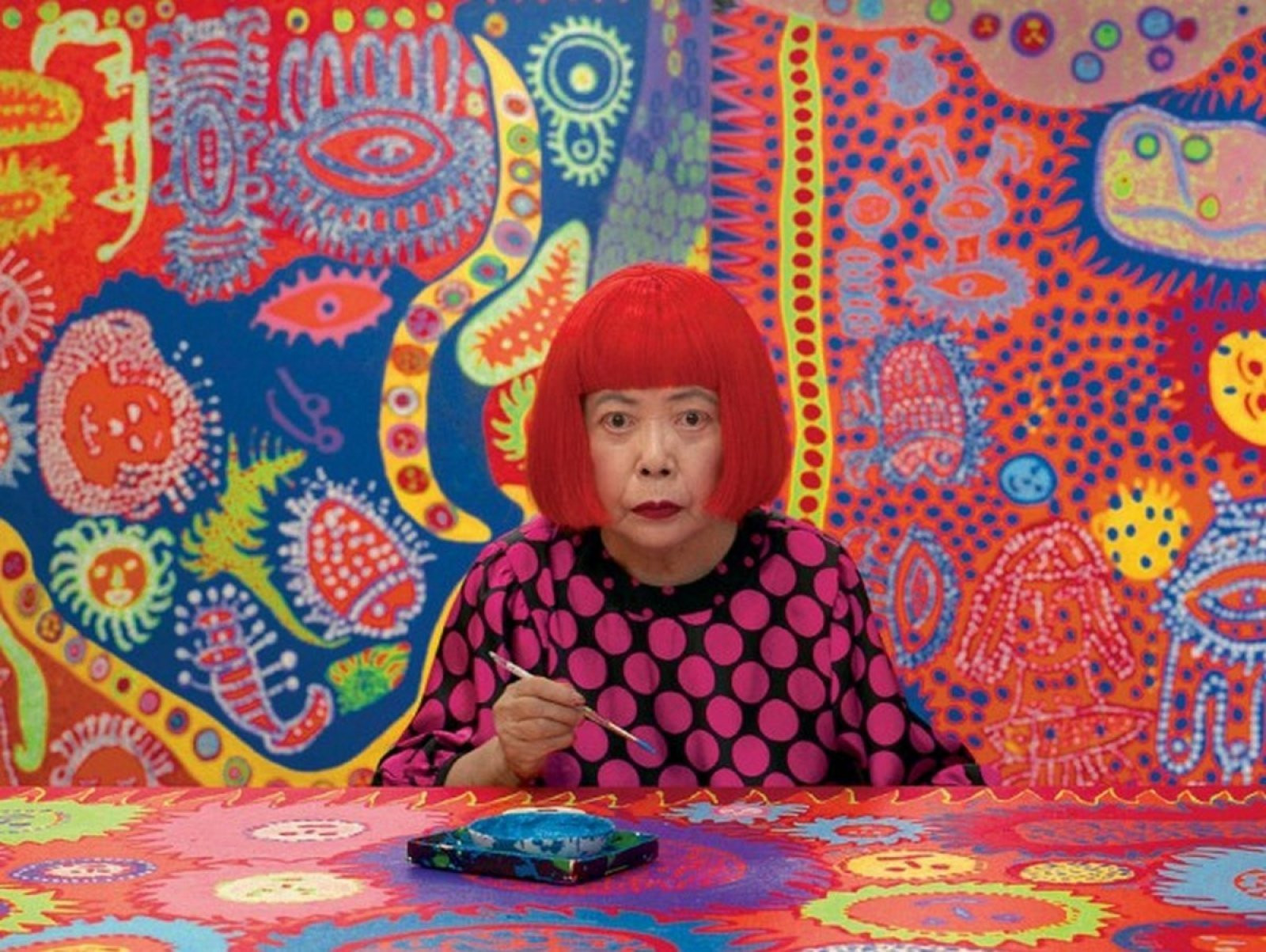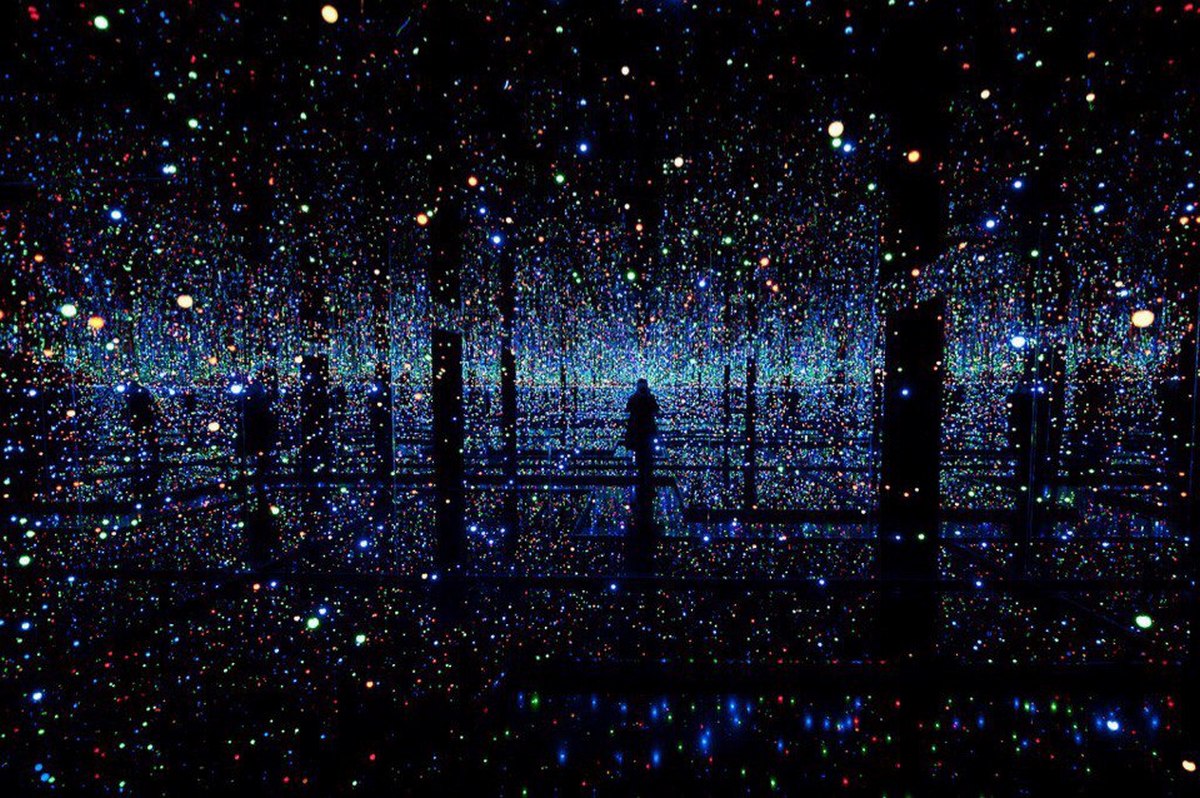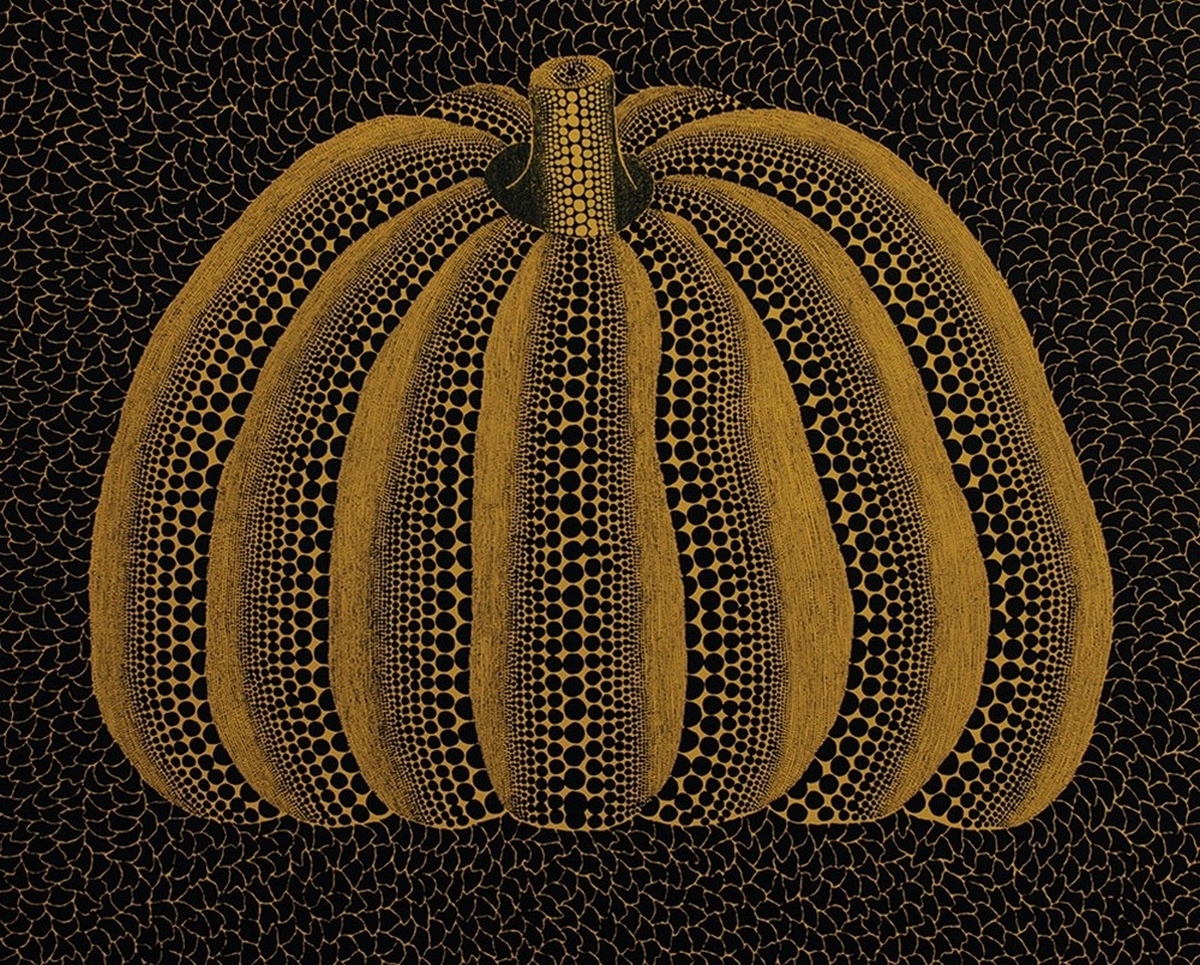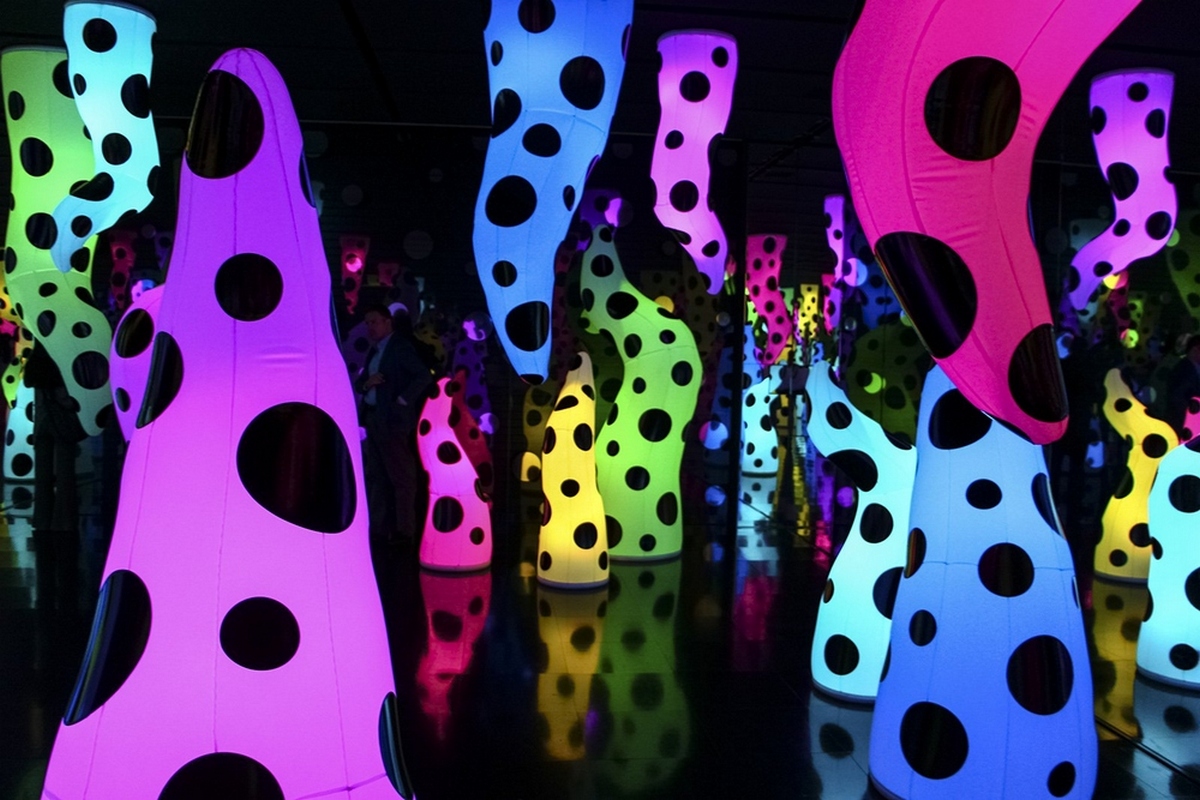

Yayoi Kusama is one of the most unusual artists of our time. Both her work and biography attract the attention of fans. Yayoi Kusama belongs to those masters whose life has turned into real work of art, a canvas painted by the lines of fate. In addition, she is one of the most expensive and sought-after artists of our time.
Early years and creative searches
Yayoi Kusama was born in 1929 in Matsumoto (Nagano Prefecture, Japan) in the family of a successful entrepreneur. The girl's family adhered to strict patriarchal traditions and, from childhood, prepared her for the role of an exemplary wife. Any creativity or career was out of the question. Although he brought up his children in the spirit of respect for family values, the father of the family was not an exemplary family man himself. Constant affairs on the side created tension in his relationship with his wife, who often sent little Yayoi to spy on her father. Perhaps this traumatic experience later became the reason for the refusal to create a family and close relationships with men.

"Infinite mirror room" Yayoi Kusama. Photos © supercoolpics.com
Since childhood, the artist's creativity has acquired a bright psychological color. Drawing for her was not just entertainment but a way of expressing feelings and emotions. At the age of 10, the author's style of the "Queen of Peas" began to form, to which she remained faithful throughout her life. Yayoi found great pleasure in drawing dots, which covered almost all the images on the canvas. Later she noted that the colors of the dots coincided with the emotional coloring of her state of mind. She painted bright dots when she was in a good mood and dark ones - during depression and bouts of melancholy. At the same time, according to Yayoi, she began to have visual and auditory hallucinations, which also left an imprint on all her work.
Parents disapproved of their daughter's hobbies and tried in every possible way to make her do "decent" things for her age and gender. For example, her mother made a "deal" with her, according to which she could study at art school and attend etiquette courses. Nothing, however, came of it: Yayoi did not even think to fulfill her obligations and devoted all her time to art. Her artistic training was not quite ordinary. Yayoi showed little interest in fine academic arts, continuing to create in her own author's style. In 1939-1945, Japan took an active part in World War II, so the entire population was involved in producing goods for the front. Yayoi's memories of working at the parachute factory were forever engraved in her mind and made her an ardent opponent of everything related to militarism.

"Pumpkin" Yayoi Kusama. Photos © cameralabs.org
In 1957, there was a conflict between the artist and her parents. The reason for it was Yayoi's unwillingness to marry: at that time, she was already 27 years old and refused several suitors. The artist's mother made her understand that her presence in the house was undesirable and it was better to leave them forever. Despite the complex relationship with her parents, this was a real blow for Yayoi. The artist marked the break of relations with her family and the beginning of a new life by burning 2000 works near the river in front of her parents' house. Immediately after that, she went to the United States. To leave the country, she had to lie and declare that the purpose of the visit was to hold a personal exhibition. Yayoi planned to use wads of money to set up a new life, which had to be sewn into her clothes.
Life after moving to the USA
Unfortunately, disappointments awaited the artist in the country across the ocean. Before her arrival, Yayoi thought that she would have every opportunity to create new art in the progressive USA. An unpleasant surprise was the total domination of men in the field of art in the 60s and 70s. The extravagant artist in bright kimonos was not in a hurry to be accepted into the circle of avant-garde artists, and acquaintance with some of them even left unpleasant memories. For example, Klas Oldenburg borrowed the artist's know-how and began to create textile sculptures. Andy Warhol also disappointed her: he used her idea of repeating images in wallpaper in his famous work "Campbell Soup Cans."
Despite the difficulties, the artist actively uses all opportunities for creative realization. She participates in joint exhibitions with other representatives of the avant-garde movement and tries herself in different types and directions of fine arts. Yayoi's work practically defies categorization: here, you can find features of feminism, minimalism, surrealism, abstract expressionism, art brut, and pop art. Despite such diversity, the author's style is easily recognizable due to the constant motives of her work: life in harmony with the world, love, and dissolution of the personal self in the infinite universe.

"Love is calling" Yayoi Kusama. Photos © cameralabs.org
In the New York period of her work, Yayoi began to paint large canvases with countless grids of patterns. For her, these works became a kind of test in art therapy, and for the fine art of the New York school, the paintings of the Japanese artist became a transition from active painting to ascetic minimalism. In parallel, Yayoi is fond of sculpture, conducts various performances, and creates installations. Her soft sculptures, covered with penis-shaped pillows, are considered harbingers of pop art.
Sometimes her installations were combined with performances. For example, at the Venice Biennale, the artist laid out 1500 mirror balls (the building "Garden of Narcissus") and then began to sell them to the audience for 2 dollars apiece. In this way, she protested against the commercialization of art. Yayoi devoted part of her performances to anti-war themes. In 1968, she held an anti-war happening with the burning of the American flag on the Brooklyn Bridge. The naked participants of the event were to remind the American authorities and society that the human body is beautiful and there is no need to send it to war.
Return to the homeland and recognition
In 1977, the artist's mental health was shaken due to problems in her personal life, the news of her father's death, and failures in her work. She returned to her homeland and voluntarily went to a psychiatric clinic, where she lives to this day, freely visiting her nearby studio. For a long time, the artist's name was somewhat forgotten in the creative environment, but all this was just a pause before gaining real popularity. Since the mid-90s, Yayoi Kusama has become one of our time's most famous and highly-paid artists. Her age, unusual biography, and active life position played a role here, allowing Yayoi, even in her tenth decade, to create and delight fans with stunning paintings. Yayoi Kusama creates his works without prior preparation and sketches. Everything comes out from the first time. In addition to statues, paintings, and installations, the artist actively creates designer clothes for Louis Vuitton. However, after the release of bags and shoes with characteristic circles, all collection items became associated with the artist's name and not with the brand itself.
The most famous works of Yayoi Kusama
1. Endless mirror room. A closed space with mirrored walls filled with phalluses with red dots. A superficial description of this installation may make you smile, but this whole exposition is full of deep meanings: the infinity of the universe and the desire for love. For more than 60 years of her creative career, the artist has created about two dozen mirrored rooms with different filling options.

"A fairy tale in blue, this is my life" Yayoi Kusama. Photos © cameralabs.org
2. Flickering lights of souls. One of the artist's recent installations was created in 2008. Glowing lanterns in a room with mirrored walls measuring four by 4 meters slowly flicker in different colors. On the room's floor is a pool with a small bridge. Outer space envelops you from head to toe. This "Queen of Peas" work makes a stunning impression on visitors.
3. Networks of infinity. A series of paintings depicting dots in the grids of spirals. They have no beginning and no end. On the canvases, the artist found the appropriate embodiment of the idea of the infinity of art and the universe. The paintings of this series were first presented in 1959. Art critics believe that Yayoi's works influenced the formation of abstract expressionism. The artworks also clearly show the artist's inner desire for liberation from fears and catharsis.
KyivGallery art critic
